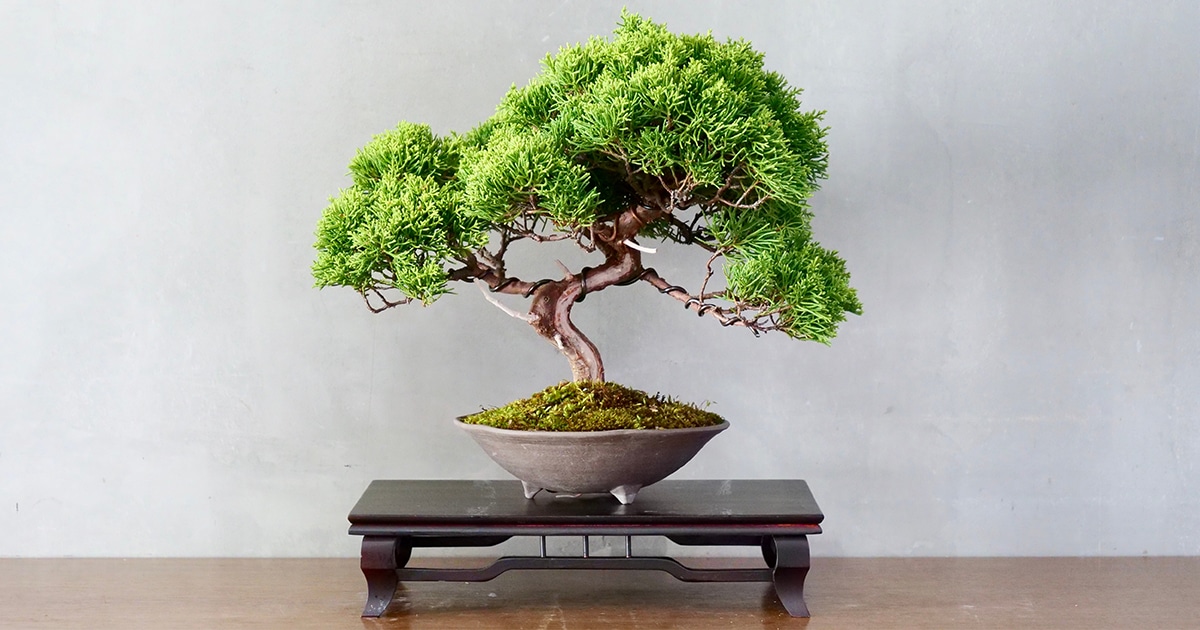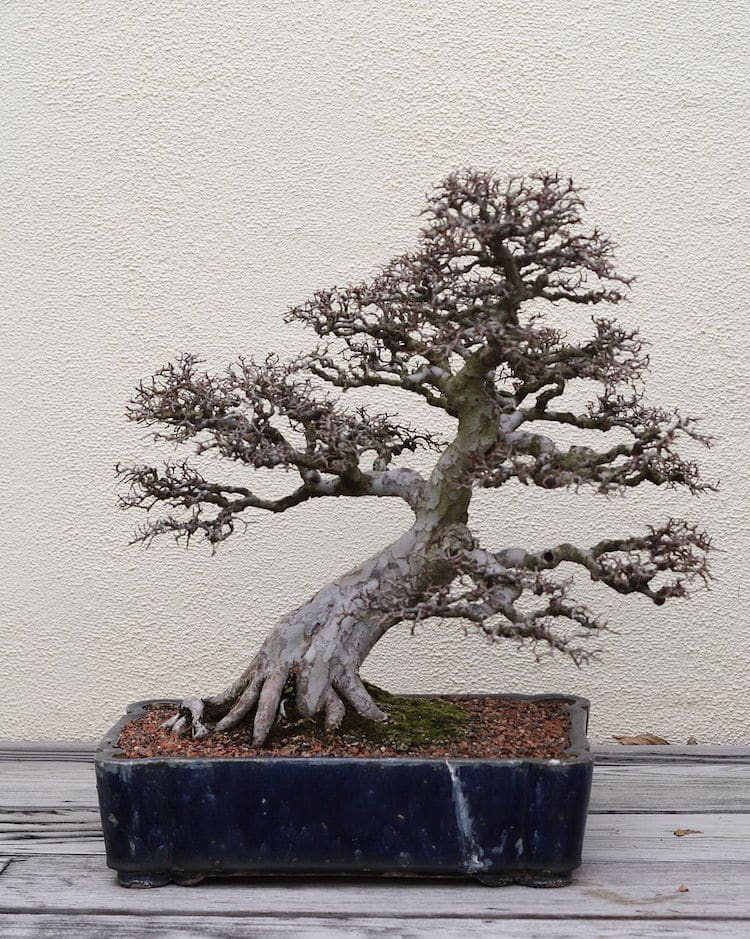The Bonsai tree represents harmony, balance, and patience. It symbolizes the art of nurturing nature in a miniature form.
Bonsai, a centuries-old art form, originates from Japan. Cultivating these miniature trees demands meticulous care and dedication. Enthusiasts find peace and mindfulness in the practice. The tiny trees mirror nature’s grandeur on a small scale, embodying balance and tranquility. Each Bonsai tells a unique story, reflecting the grower’s patience and creativity.
Many people cherish Bonsai for its aesthetic beauty and spiritual significance. The art of Bonsai fosters a deep connection with nature and promotes inner calm. Whether for decoration or meditation, these trees offer a unique blend of natural beauty and artistic expression.

Credit: bonsai2u.co.uk
Introduction To Bonsai Trees
Bonsai trees are miniature versions of full-sized trees. They are grown and shaped in small containers. These small trees symbolize beauty and harmony. Many people find peace in growing bonsai trees.
Brief History
The art of bonsai began over a thousand years ago in China. Early bonsai trees were known as “pun-sai.” They were crafted by monks. The practice spread to Japan. It became popular during the Kamakura period. Japanese bonsai focused on nature’s beauty and simplicity.
Cultural Significance
Bonsai trees hold deep meaning in various cultures. In Japan, they represent balance, patience, and harmony. These small trees are a symbol of peace and order. In China, bonsai trees signify eternal life and the harmony between man and nature. They also symbolize wealth and good fortune.
Bonsai trees are often given as gifts. They are thought to bring good luck and positive energy. Many people use bonsai trees in meditation practices. They help calm the mind and focus thoughts.
Symbolism In Modern Times
Today, bonsai trees continue to be popular worldwide. They are cherished for their beauty and symbolism. People of all ages enjoy growing bonsai trees. These miniature trees bring a touch of nature into homes and offices. They remind us of the importance of patience, care, and harmony in our lives.

Credit: mymodernmet.com
Symbolism Of Bonsai Trees
Bonsai trees are more than just miniature plants. They hold deep meanings and symbolize various virtues. These tiny trees teach us important life lessons through their unique symbolism.
Patience And Care
Growing a bonsai tree requires immense patience and care. Each bonsai takes years to grow and shape. Gardeners must prune and water the tree regularly. This teaches the value of patience in achieving great results. Just like life, bonsai trees thrive with consistent, loving care.
Harmony And Balance
Bonsai trees represent harmony and balance. Their carefully designed shapes mirror the balance found in nature. The tree’s design must balance in size, shape, and aesthetics. This creates a sense of peace and tranquility. Bonsai trees remind us to seek balance in our own lives.
Bonsai In Different Cultures
The bonsai tree is more than a small plant. It holds deep meaning in various cultures. Different societies see it differently. Let’s explore its significance in Japan and China.
Japanese Traditions
In Japan, bonsai trees are symbols of harmony, balance, and patience. They represent the beauty of nature in a small form. Many Japanese homes have bonsai trees. These trees are seen as living art. They remind people to stay calm and patient.
Zen Buddhism has influenced the Japanese bonsai culture. Zen monks use bonsai for meditation. The trees help them focus and find peace. The art of growing bonsai is called “Saikei” in Japanese. It is a respected and ancient practice.
Chinese Perspectives
In China, the bonsai tree is known as “Penjing”. It means “tray scenery”. The Chinese see bonsai as a form of landscape art. They create miniature landscapes with trees, rocks, and water. These small landscapes tell stories and show emotions.
Chinese bonsai represents wisdom and strength. The trees are often seen in scholar gardens. Scholars use them for inspiration and reflection. The Chinese believe bonsai can bring good luck and prosperity. The art of Penjing dates back over a thousand years.

Credit: mymodernmet.com
Spiritual Representations
The Bonsai tree holds deep spiritual significance in various cultures. It symbolizes harmony, balance, patience, and inner peace. These small trees carry big meanings, making them more than just decorative plants.
Zen Buddhism
In Zen Buddhism, the Bonsai tree represents the harmony of nature and the universe. It embodies simplicity and the beauty of imperfection. Practitioners see the tree as a living art form. It is a reminder of the interconnectedness of all things.
Zen monks cultivate Bonsai trees as a spiritual practice. The tree’s growth mirrors the monk’s journey towards enlightenment. The care and patience required reflect the need for mindfulness and presence in daily life.
Meditative Practices
Caring for a Bonsai tree is also a form of meditation. It involves deep concentration and focus. Each pruning and watering session becomes a mindful activity. The tree teaches patience and attention to detail. This practice helps calm the mind and reduce stress.
Many people find solace in watching their Bonsai tree grow. This act of nurturing brings a sense of peace. The tree’s slow growth reminds us to appreciate the present moment.
| Aspect | Representation |
|---|---|
| Zen Buddhism | Harmony, Simplicity, Imperfection |
| Meditative Practices | Mindfulness, Patience, Peace |
- Bonsai represents balance and harmony.
- It teaches patience and mindfulness.
- The tree symbolizes inner peace and enlightenment.
Bonsai As A Reflection Of Nature
The art of bonsai beautifully mirrors the natural world. These tiny trees capture the essence of vast landscapes. They remind us of nature’s beauty and complexity.
Miniature Landscapes
Bonsai trees often represent miniature landscapes. They mimic the grandeur of forests and mountains. Each bonsai tells a unique story through its shape and form.
Creating a bonsai requires attention to detail. The placement of each branch and leaf is crucial. This careful design creates a lifelike natural scene.
| Element | Representation |
|---|---|
| Roots | Foundation and stability |
| Trunk | Strength and growth |
| Leaves | Life and renewal |
Seasons And Cycles
Bonsai trees reflect the seasons and cycles of nature. They showcase the passage of time. In spring, they bloom with new life. In autumn, their leaves change color and fall.
These changes remind us of nature’s rhythm. Bonsai trees teach patience and the beauty of change. Observing a bonsai through the seasons is a lesson in life’s cycles.
- Spring: New growth and blossoms
- Summer: Full foliage and vitality
- Autumn: Color change and shedding leaves
- Winter: Dormancy and rest
Artistry And Aesthetics
The bonsai tree is more than a small plant. It is a living piece of art. The art of bonsai captures beauty and skill. It reflects nature on a miniature scale. Bonsai trees are a blend of natural beauty and human creativity.
Techniques And Styles
Bonsai trees require special techniques. These techniques shape and style the tree. Pruning, wiring, and repotting are common methods. Each method helps achieve a certain look.
- Pruning: Removes unwanted branches and leaves.
- Wiring: Bends branches into desired shapes.
- Repotting: Ensures roots have space to grow.
There are many styles of bonsai trees. Each style has unique characteristics. Here are a few popular styles:
| Style | Description |
|---|---|
| Formal Upright | Tree grows straight up with balanced branches. |
| Informal Upright | Tree has curves and bends in the trunk. |
| Slanting | Tree grows at an angle, not straight up. |
Creative Expression
Bonsai trees allow for creative expression. Each tree is unique. Artists express their vision through their trees. The shape, size, and style reflect the artist’s creativity.
- Choosing the Tree: Select a tree that inspires you.
- Designing the Tree: Plan the shape and style.
- Executing the Design: Use techniques to bring the vision to life.
Creating a bonsai tree is like painting a picture. The artist decides every detail. This makes each bonsai tree a unique piece of art.
Bonsai As A Personal Journey
The journey of nurturing a bonsai tree is deeply personal. It involves patience, care, and a strong connection with nature. Each step in cultivating a bonsai is a reflection of one’s inner self and growth.
Self-discipline
Self-discipline is vital in bonsai cultivation. Regular pruning, watering, and shaping are necessary to maintain the tree’s health and beauty. This routine fosters a disciplined mindset in the caretaker.
Maintaining a bonsai tree teaches consistency. Each action, no matter how small, contributes to the tree’s overall wellbeing. This practice reinforces the value of persistence and dedication.
Emotional Connection
Emotional connection with a bonsai tree is profound. The caretaker forms a bond with the tree over time. This bond is nurtured through daily interactions and care.
Observing the tree’s growth and changes evokes a sense of accomplishment. This emotional investment helps the caretaker develop empathy and patience. Each new leaf or branch brings joy and satisfaction.
| Aspect | Impact |
|---|---|
| Self-Discipline | Teaches consistency and dedication |
| Emotional Connection | Fosters empathy and patience |
Modern Interpretations
In modern times, the bonsai tree has evolved beyond traditional meanings. It now holds various interpretations across different cultures and lifestyles. These modern interpretations offer a fresh perspective on this ancient art form.
Contemporary Trends
Bonsai trees are now seen as symbols of minimalism and mindfulness. People use them to create peaceful home environments. They align well with the modern lifestyle that values simplicity and clarity. Bonsai trees are also popular in urban settings. They offer a touch of nature in small living spaces.
Another trend is the use of bonsai in wellness practices. Many see them as tools for meditation and relaxation. This is because of their calming effect. Bonsai trees help in reducing stress and promoting mental well-being.
Global Influence
The bonsai tree has a global appeal today. It transcends its Japanese origins. Different cultures have adopted it with unique interpretations. In Western cultures, bonsai trees are often associated with artistic expression. People appreciate them as living sculptures. They also represent the harmony between man and nature.
In Asian cultures outside Japan, bonsai trees are linked to spiritual growth. They symbolize the journey of life and personal development. This is because the process of growing a bonsai is slow and requires patience.
Here is a table showing various modern interpretations of the bonsai tree:
| Region | Modern Interpretation |
|---|---|
| Western Cultures | Artistic Expression, Harmony with Nature |
| Eastern Cultures | Spiritual Growth, Patience |
| Urban Areas | Minimalism, Mindfulness |
Overall, the bonsai tree continues to inspire people worldwide. It adapts to modern lifestyles and holds significant meaning in various contexts.
Conclusion
Bonsai trees symbolize harmony, balance, and patience. They represent an art form that connects nature and human creativity. Caring for a bonsai teaches mindfulness and dedication. Their presence brings tranquility and a sense of accomplishment. Embrace the beauty and deeper meaning of bonsai trees in your space.

